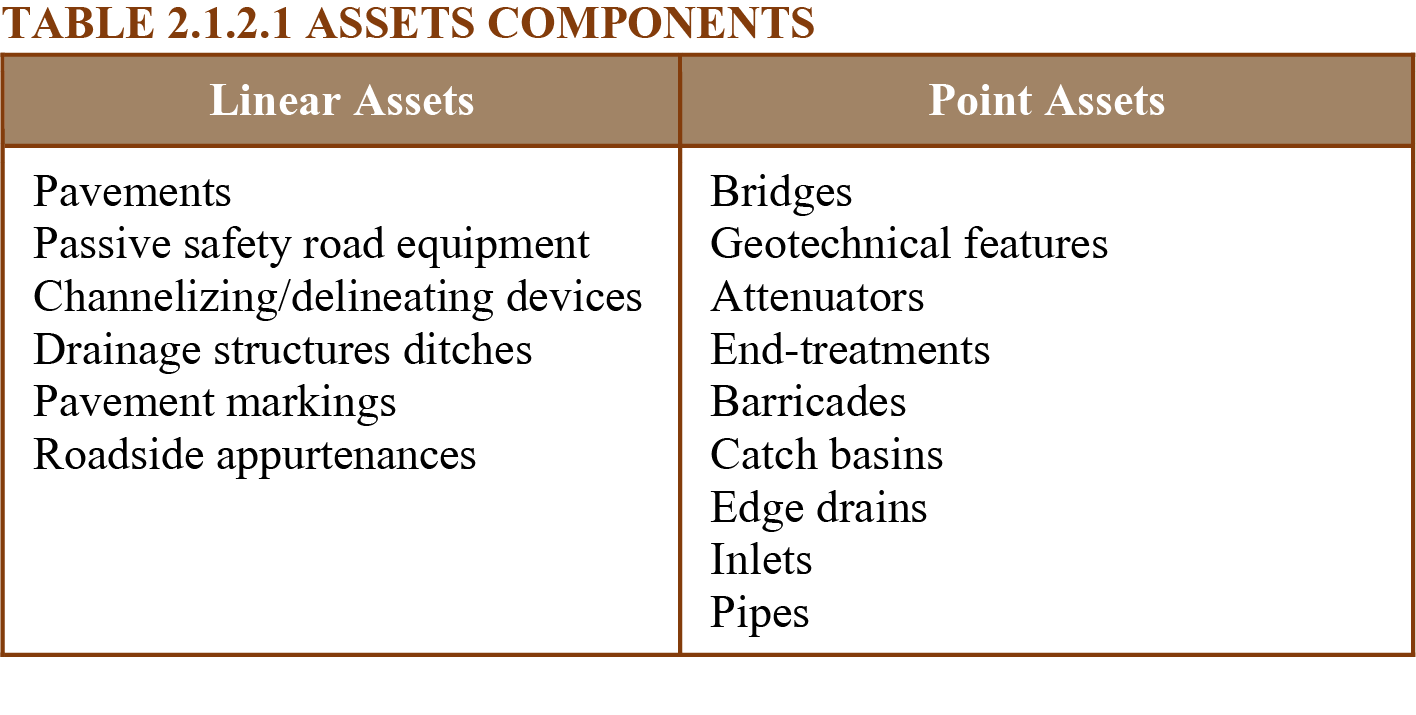
Asset Management Manual
A guide for practitioners!

Asset Management Manual
A guide for practitioners!
In today’s big data world it is possible to gather data on just about anything, but the primary objective should be to collect only data that will measure progress toward the defined goals and help road organization to make decisions.
The data needed by any road organization are those that influence (World Bank 1997):
In principle, asset management data falls into three main types and can be grouped as follows:
Inventory and condition data refer to the key infrastructure areas or the primary asset components including liner and points assets, as shown in table 2.1.2.1.

Regardless of the maturity level of a specific road organization, it is imperative that a data management strategy be defined (Telli 2010). A data management strategy may comprise the following:
The following questions should be considered when deciding what data to collect: